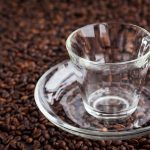1. Introduction to Decaf Coffee
Decaf coffee, short for decaffeinated coffee, is a popular choice for people who love the taste and ritual of coffee but want to avoid the stimulating effects of caffeine. In the U.S., where coffee culture is deeply rooted in daily routines—from morning brews to afternoon pick-me-ups—decaf offers a comforting alternative without the jitters.
Many Americans turn to decaf for various reasons. Some are sensitive to caffeine or have medical conditions that require cutting back. Others simply enjoy sipping on a warm cup of joe later in the day without disrupting their sleep. Whether it’s part of a health-conscious lifestyle or just a preference, decaf plays an important role in modern coffee habits.
Despite its popularity, not all decaf is created equal. The process used to remove caffeine can significantly affect the flavor and quality of the coffee. That’s why understanding how decaf is made is essential for anyone who wants to make informed choices about what theyre drinking. In this article, we’ll dive into three common decaffeination methods: Swiss Water Process, CO2 Process, and Chemical Solvent Methods. Each method has its pros and cons when it comes to taste, health concerns, and environmental impact.
Here’s a quick look at why some people prefer decaf:
| Reason | Description |
|---|---|
| Caffeine Sensitivity | Some individuals experience anxiety, insomnia, or heart palpitations from caffeine. |
| Health Conditions | Certain medical issues like acid reflux or pregnancy may require reduced caffeine intake. |
| Evening Enjoyment | People want to enjoy coffee flavor at night without staying awake. |
| Lifestyle Choice | A personal decision to reduce stimulant intake as part of a wellness routine. |
Understanding how your favorite decaf brew is processed can help you choose one that matches your values and taste preferences. Let’s explore how each method works and what makes them unique in the world of American coffee culture.
2. The Swiss Water Process
The Swiss Water Process is a popular decaffeination method that stands out because it doesnt use any chemicals to remove caffeine. Instead, it relies on three natural elements: water, temperature, and time. This makes it a favorite choice for people who are health-conscious or prefer organic products.
How It Works
The process begins with green (unroasted) coffee beans. These beans are soaked in hot water to dissolve the caffeine along with other soluble compounds like flavor oils. Then, the water is passed through a special carbon filter that captures only the caffeine molecules, leaving the flavor compounds behind. This creates what’s called “Green Coffee Extract” (GCE).
Next, new batches of green coffee beans are introduced into this GCE solution. Since the solution already contains flavor compounds but no caffeine, only the caffeine from the new beans gets pulled out—thanks to osmosis. This step is repeated over several hours until the beans are 99.9% caffeine-free.
Key Features of the Swiss Water Process
| Feature | Description |
|---|---|
| Chemical-Free | No solvents or additives used; just water and filters |
| Flavor Retention | Preserves much of the original flavor of the coffee bean |
| Sustainability | Eco-friendly and often used by organic-certified roasters |
| Popularity | Commonly found in health food stores and specialty cafes across the U.S. |
Why American Coffee Drinkers Love It
In the United States, more and more consumers are looking for clean-label products—items that are simple, transparent, and made without artificial ingredients. The Swiss Water Process fits right into this trend. Whether youre avoiding chemicals for health reasons or just prefer a more natural cup of joe, this method offers peace of mind along with great taste.

3. The CO2 (Carbon Dioxide) Method
When it comes to decaffeinating coffee while keeping its flavor intact, the CO2 method—also known as the supercritical carbon dioxide process—is a standout choice. It’s especially popular among specialty coffee roasters in the U.S. who want to offer decaf options without compromising on taste.
How It Works
This method uses liquid carbon dioxide under high pressure to extract caffeine from green coffee beans. Heres a simple breakdown of how the process works:
| Step | Description |
|---|---|
| 1. Steaming | The green coffee beans are first steamed to open up their pores. |
| 2. CO2 Application | The beans are then soaked in a stainless-steel chamber filled with highly pressurized liquid CO2. |
| 3. Caffeine Extraction | The CO2 selectively bonds with caffeine molecules and draws them out of the beans. |
| 4. Separation | The CO2, now containing caffeine, is transferred to another container where the caffeine is removed and the CO2 is recycled. |
| 5. Drying | The beans are dried and ready for roasting. |
Why Its Popular in the U.S.
The CO2 method has gained popularity in American coffee culture for several good reasons:
- No Chemical Residue: Since it uses natural carbon dioxide, theres no chemical aftertaste or residue left behind.
- Keeps Flavor Intact: This method is excellent at preserving the original flavor profile of the coffee, making it ideal for premium and specialty decaf options.
- Sustainable & Reusable: The CO2 used in the process can be captured and reused, reducing waste.
- FDA Approved: Considered safe by health authorities, which gives both sellers and consumers peace of mind.
A Quick Comparison with Other Methods
| Method | Main Solvent Used | Taste Preservation | Chemical-Free? | Main Use Case in U.S. |
|---|---|---|---|---|
| CO2 | Liquid/Supercritical Carbon Dioxide | High | Yes | Specialty & Premium Decaf Coffee |
| Swiss Water Process | Water + Green Coffee Extract (GCE) | Moderate to High | Yes | Organic & Artisan Decaf Coffee Brands |
| Chemical Solvent Method (MC or EA) | Methylene Chloride or Ethyl Acetate | Moderate | No (uses chemicals) | Mainstream Mass-Market Brands |
The Bottom Line on CO2
If youre looking for a decaf option that delivers full flavor without chemical processing, the CO2 method is one of the best choices available today. Its efficient, safe, and great at maintaining the integrity of your favorite brews—all reasons why its embraced by many American roasters and coffee lovers alike.
4. Chemical Solvent Methods
Chemical solvent methods are among the most common ways to decaffeinate coffee, especially for large-scale commercial production. These methods use food-safe solvents like methylene chloride or ethyl acetate to remove caffeine from green coffee beans before they’re roasted.
How It Works
The process begins by steaming green coffee beans to open their pores. Then, the beans are rinsed with a solvent that selectively bonds with caffeine molecules. After multiple washes, the solvent is removed, and the beans are steamed again to eliminate any remaining traces.
Types of Solvents Used
| Solvent | Source | Notes |
|---|---|---|
| Methylene Chloride | Synthetic | Highly effective; strict U.S. regulations ensure safety |
| Ethyl Acetate | Occurs naturally in fruits (or produced synthetically) | Often marketed as “natural” when derived from natural sources |
Effectiveness and Flavor Impact
Chemical solvent methods are efficient at removing up to 97% of the caffeine content while preserving much of the coffees original flavor. Many people can’t tell the difference between regular and decaf processed this way.
Is It Safe?
Yes—when done according to FDA guidelines. For example, methylene chloride is used in such tiny amounts that residue in decaffeinated coffee is almost undetectable—well below the limit set by the U.S. Food and Drug Administration (FDA), which allows no more than 10 parts per million. Regular testing ensures that all coffee sold in the U.S. meets these safety standards.
Quick Facts About Safety Regulations in the U.S.
- Methylene chloride: Must not exceed 10 ppm in the final product
- FDA oversight: Enforces strict safety standards for solvent use in food processing
- Consumer protection: Decaf coffee sold in stores must meet federal health regulations
Bottom Line on Solvent-Based Methods
If youve ever enjoyed a cup of store-bought decaf, chances are it was made using one of these solvent-based methods. Theyre widely used, well-regulated, and offer a reliable way to enjoy your favorite brew without the buzz.
5. Comparing the Pros and Cons
When choosing decaf coffee, its helpful to understand how each decaffeination method stacks up in terms of health, flavor, cost, and environmental impact. Heres a simple breakdown to help you make the best choice based on what matters most to you.
Health Concerns
Swiss Water Process: This method uses only water and osmosis, making it a top choice for those looking to avoid chemicals altogether. Its certified organic and non-toxic.
CO2 Process: Also considered safe, this method uses carbon dioxide in a highly controlled environment. There are no harmful residues left on the beans.
Chemical Methods (Methylene Chloride or Ethyl Acetate): These methods use solvents to extract caffeine. While FDA-approved and generally recognized as safe, some consumers prefer to avoid them due to concerns about chemical exposure.
Flavor Retention
Swiss Water Process: Known for preserving much of the coffee’s original flavor profile, although some subtle notes can be lost during the process.
CO2 Process: Excellent at maintaining flavor, especially for high-end specialty coffees. It targets only caffeine molecules without disturbing other compounds.
Chemical Methods: Can sometimes strip away more flavor than other methods, especially if not carefully controlled. However, they are often used in commercial-grade coffee where flavor complexity is less critical.
Cost
Swiss Water Process: Tends to be more expensive because it requires more equipment and time. Often found in premium or organic coffee brands.
CO2 Process: This is the most expensive method due to its technical demands and equipment costs. Usually reserved for high-end products.
Chemical Methods: The most cost-effective option, which is why it’s widely used for mass-market decaf coffees.
Environmental Impact
Swiss Water Process: Environmentally friendly—it uses water and reuses its resources in a closed-loop system with minimal waste.
CO2 Process: Considered sustainable because CO2 can be recycled within the system. However, energy use can be high depending on the setup.
Chemical Methods: Less eco-friendly due to the use of synthetic solvents. Proper disposal is required to minimize environmental harm.
Quick Comparison Table
| Method | Health Safety | Flavor Retention | Cost | Environmental Impact |
|---|---|---|---|---|
| Swiss Water | Excellent (No Chemicals) | Very Good | High | Eco-Friendly |
| CO2 Process | Excellent (No Harmful Residues) | Excellent | Very High | Sustainable but Energy-Intensive |
| Chemical Method | Adequate (FDA Approved) | Moderate | Low | Poorer (Chemical Use) |
Choosing Whats Right for You
If youre focused on clean ingredients and sustainability, Swiss Water might be your best bet. For those who prioritize taste above all else and don’t mind paying extra, CO2 decaf could be ideal. If youre watching your budget and just want a decent cup without caffeine, chemically processed decaf may still work fine for everyday drinking.


